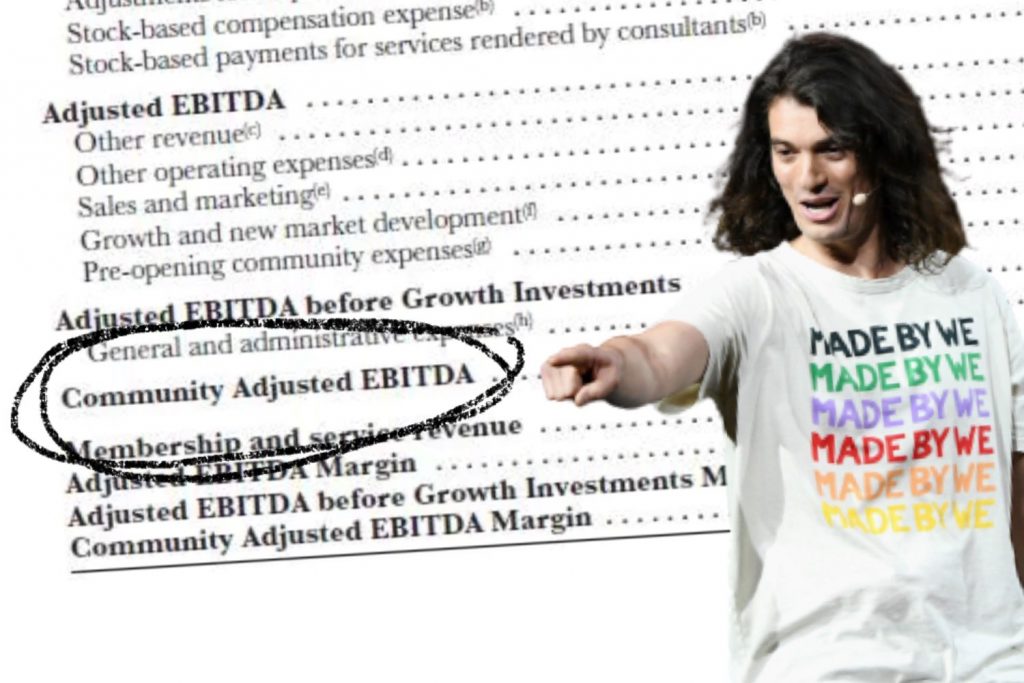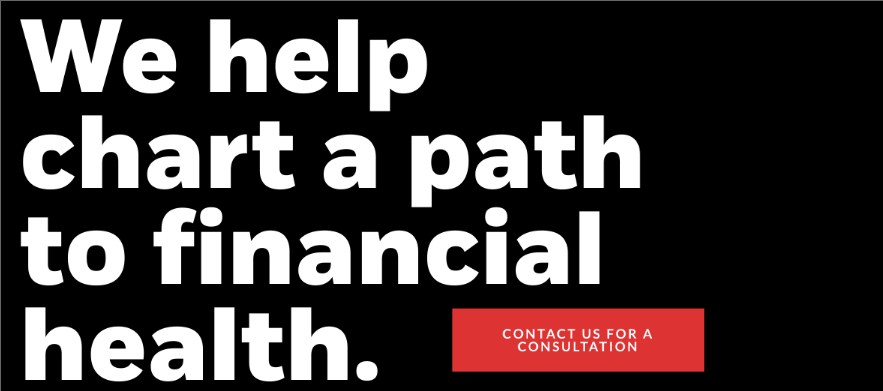Forbes Analysis Shows that Pre-IPO Statements On Profitability (Adjusted EBITDA) for Some Startups Were Embellished
Recently I came across a Forbes article published by David Jeans, that according to a Forbes analysis found that “More than one in four of the 50 largest venture-backed companies to go public since 2019 made assertions about their profitability that don’t appear to line up with their later IPO-related disclosures to the SEC.” Some of the well-known Unicorn companies include Allbirds, WeWork, Warby Parker, Lyft, Palantir, and Coinbase. The vast majority of tech companies tapping public markets post both high growth rates and persistent losses. Scaling costs money, and both public and private investors are pretty comfortable watching favored companies post losses en route to becoming dominant players in their respective markets.
The article first dives into Allbirds a popular New Zealand-American company that designs and sells footwear, which raised over $200 million from investors, but the CEO Joey Zwillinger’s had made claims to media outlets that which included the Wall Street Journal in 2018 and TechCrunch, that they been“profitable since basically day one.” But when the company filed to go public last month, Zwillinger’s assertions contradict the disclosures made by the company to the SEC. In fact, the company stated in a filing ahead of its planned IPO that it had “incurred significant net losses since inception and anticipate that we will continue to incur losses for the foreseeable future.”
The Forbes analysis found that AllBirds is just one of numerous startups whose executives got ahead of themselves as they ramped up to go public. Leaders of the companies, including Palantir, Lyft, Oscar Health, and others, made oral and written claims about profitability in the media or at public events that didn’t sync up with later company filings to the SEC, known as S-1 or F-1 documents.
Suraj Srinivasan, an accounting and management professor at Harvard Business School told Forbes that “it’s enthusiastic entrepreneurs…who have such faith in themselves and what they’ve created that they find it hard to switch off that mode when you’re talking about factual things like profitability,”
The tech world’s continuing fondness for questionable accounting adjustments
With some of these private high-growth startups, when their CEOs speak of profitability in broad and optimistic terms in the years before their IPOs, they were relying on alternative profitability metrics such as “adjusted EBITDA” or “structural profitability.”
EBITDA seems to be everywhere we look despite the continual debate around its usefulness (e.g., EBITDA doesn’t take into account the capital intensity of a business or changes in working capital or the fact that it must pay taxes to name a few pitfalls). Here’s a simple exercise for you to try: the next time you use an EBITDA-based valuation, ask yourself if it’s the appropriate metric to use for the company you are valuing. For example, if the company requires a significant amount of investment to grow, maybe EBITDA is not the best metric to use.
As if there weren’t enough concerns around traditional EBITDA (remember it’s not defined by GAAP), management teams have decided to adjust it even further. In 2020 CNBC reported that Uber, Lyft, Pinterest and Yelp are among the growing number of internet companies that rely on adjusted EBITDA to tell investors how they’re performing. EBITDA stands for earnings before interest, taxes, depreciation and amortization. Berkshire Hathaway Vice Chairman Charlie Munger describes it another way: “bulls— earnings.”
To get to EBITDA, companies take bottom-line net income (or loss), based on generally accepted accounting principles (GAAP), and then add back in items they had counted as costs but that don’t affect their cash position. For example, as equipment and software ages, the depreciating value counts as an expense even though it doesn’t involve the outlay of capital, so EBITDA lets you show how earnings would look without depreciation.
The Formula for Adjusted EBITDA Is
NI+IT+DA=EBITDA
EBITDA+/−A=Adjusted EBITDA
Some startup companies, in particular, take the further step of reporting adjusted EBITDA, providing a glimpse of their earnings if they didn’t have to account for stock-based compensation. That’s a major expense in Silicon Valley, where equity is such a big recruiting tool and a way to pay founders and top executives.
Robert Willens, an independent tax consultant, said a major challenge for investors is that there’s no standardized measure for EBITDA, giving companies latitude to decide what to include and exclude. There’s also a lot of variabilities when it comes to how much companies rely on equity-based compensation. Techcrunch recently reported that a shared micro-mobility scooter operator Lime is on track for a third-quarter adjusted EBITDA profitability, and adjusted EBITDA is a non-GAAP accounting measure that many startups use to give a more comparable picture of their financial performance. Factors like stock-based compensation for employees are often removed from adjusted EBITDA, which can make it all but impossible to truly understand a company’s cash flow position without an official SEC filing.
I wrote about this subject in an article titled “Do Financial Statements Really Work for Digital Technology Startup Corporations?” For example, a representative, for the American spin bike and media company Peloton, whose CEO John Foley had said the company was profitable while it was private before the company stated otherwise in an IPO-related filing to the SEC, explained the discrepancy this way: “We were obviously a private company in 2018 and internal company definitions of profitability often differ from [Generally Accepted Accounting Principles].” That is an interesting way to spin it.
In another example, ahead of its April IPO, cryptocurrency exchange Coinbase had filed documents with the SEC which disclosed that it generated a net loss of $30 million in 2019—a fact that seemed to contradict comments made by CEO Brian Armstrong at an event hosted by Vanity Fair in October 2019 in which he said the company was profitable that year and in the two prior years. In a statement to Forbes, a Coinbase spokesperson said that “during 2019, we were profitable on an adjusted EBITDA basis.” The spokesperson added that Coinbase was using an accounting practice that calculated its digital assets at fair value at the time of Armstrong’s comment and that when it prepared for its IPO, it calculated those assets at cost, which swung the company into the red.
For the Coinbase example, such discrepancies did not have too much of an impact going forward. For which it posted a profit of $322 million in 2020, before it went public in April, and reported an astonishing $900 million in operating profit in the second quarter of this year. It now has a market cap of $50 billion.
But The Forbes article point’s out that is not always the case. Concerns about exaggerated profitability helped contribute to the collapse of WeWork’s IPO in 2019. For years, the coworking company and its CEO Adam Neumann spun rosy stories of vast market potential, and invented new profit metrics such as “Community-Adjusted EBITDA.” Based in part on these claims, WeWork’s thousands of employees took equity in exchange for lower salaries, in the hope of cashing out when the company went public. But things began to unravel ahead of its IPO in part because WeWork’s true financial position disclosed to the SEC ran counter to earlier claims made by executives to journalists that the company was profitable. According to an article in the Economist, WeWork’s “community-adjusted” earnings before interest, taxes, depreciation, and amortization (EBITDA) transformed a hefty loss for 2018 under Generally Accepted Accounting Principles (GAAP) into a profit. Illegal? No. A red flag?
 In September 2019, WeWork withdrew its IPO plans, its valuation plummeted, and most employees’ shares became worthless. “WeWork will become a public company, but we can only IPO once, and we want to do it right,” former WeWork executives Artie Minson and Sebastian Gunningham said in a statement at the time. In March, the company announced renewed plans to go public through a SPAC deal at less than 20% of its 2019 valuation. On October 21, 2021, Bloomberg reported that shared-office provider WeWork finally joined the public markets, having completed a merger with a blank-check firm, BowX Acquisition Corp. Its shares will trade on the New York Stock Exchange and the ticker is, of course, “WE.”
In September 2019, WeWork withdrew its IPO plans, its valuation plummeted, and most employees’ shares became worthless. “WeWork will become a public company, but we can only IPO once, and we want to do it right,” former WeWork executives Artie Minson and Sebastian Gunningham said in a statement at the time. In March, the company announced renewed plans to go public through a SPAC deal at less than 20% of its 2019 valuation. On October 21, 2021, Bloomberg reported that shared-office provider WeWork finally joined the public markets, having completed a merger with a blank-check firm, BowX Acquisition Corp. Its shares will trade on the New York Stock Exchange and the ticker is, of course, “WE.”
Non-GAAP adjustments have spread like wildfire through corporate accounts, making it harder to discern what numbers reflect a firm’s true financial position.
There are other startups that have suggested profitability was closer than it turned out to be. The hip health insurance firm Oscar, co-founded by Josh Kushner and backed by Alphabet, drummed up enthusiasm for its financial performance in 2018 when CFO Brian West told CNBC: “Before you know it, we’ll be profitable…it’s around the corner.”
But that appears to have been wishful thinking. When Oscar filed to go public in March, it disclosed that its losses grew from $261 million in 2019 to $407 million in 2020. “The comment made by Brian West was regarding gross margin related to the ratio of premiums to medical claims for our insurance business, which we refer to as our Medical Loss Ratio, or MLR,” an Oscar spokesperson said in an email to Forbes. “This is a common metric provided by healthcare insurance companies.”
Sometimes it’s the investors that paint an overly rosy picture
Navin Chaddha, who is managing partner of Silicon Valley VC firm Mayfield and investor in Poshmark, told Vogue Business in a 2019 company profile that the used-fashion marketplace was “a very well-run company from a cash-flow perspective…Most people lose tons of money. And we don’t.” But Poshmark’s S-1 showed the company’s losses more than tripled to $49 million that year.
The SEC seems to be more concerned with companies making false claims to investors than public statements to the media about their company’s profitability
David Chase, a former SEC attorney explained to Forbes that “the SEC has the power to sue and fine privately held companies and their executives if they make false claims directly to investors. But the agency rarely takes action when corporate leaders exaggerate their profitability in media interviews or public appearances because such claims are so widespread—and because the agency doesn’t have the resources to police every statement a CEO makes to a news outlet. “
The agency is most likely to take action if executives make false statements in financial filings, which are intended to be the legal statement of record for investors. For example, Manish Lachwani, a co-founder and former CEO of a palo Akto based mobile-app testing startup Headspin, was charged by the Justice Department with wire fraud and securities fraud. The SEC filed an accompanying civil complaint. The criminal complaint says that an independent accounting firm found that the company had overstated its revenue by more than $50 million and made false claims about profitability while raising money from investors.
Sell sell sell…
The Forbes article also explained that startup founders continue to cheer on their companies in the years before announcing their intentions to go public, often using whatever profitability metric will make the company look the best. Tom Loverro, an investor at venture capital firm IVP told Forbes “many CEOs [of private companies] will colloquially talk about profitability for what in their mind, they’ve been trained to care about, which is free cash flow.” In the Economist article, Jules Kroll of k2 Intelligence stated that “when economic survival is threatened, the line separating what is acceptable and unacceptable when booking revenues or making market disclosures can be blurred.”
Warby Parker, an online retailer of prescription glasses and sunglasses said in 2018 that it would be profitable that year, news that was covered by several publications. While The Business of Fashion reported that the eyewear company would be profitable on an EBITDA basis, the New York Times reported that it would be “the retailer’s first full year of turning a profit,” citing co-CEO Dave Gilboa. But when it filed to go public last month, Warby Parker disclosed that it had “a history of losses, and we may be unable to achieve or sustain profitability” and made no mention of delivering a profit. It posted a $56 million net loss in 2020. Warby Parker declined to comment as it is in a quiet period.
Conclusion
For both Warby Parker and AllBirds, like others before them, their profit statements are unlikely to affect their bottom lines, or their stocks’ performances: after all, their glasses and shoes, respectively, are popular among consumers. “If the company still goes public and makes money for everybody, no one will care,” says Robert Siegel, a lecturer in management at Stanford Graduate School of Business. “There’s no consequences.” It seems to be a brilliant time to found a startup though. Conscious they might otherwise lose the opportunity to invest, VCs strive to appear friendly to founders, and some demand little in return for their cash initially until they get to that exit moment. All these companies spend heavily to increase market share and enter new areas. Only time will tell if these startups can try to convince investors by using non-GAAP financial terms on their road to growth and eventual profitability. Thomas Huckabee CPA provides accounting services for technology companies in San Diego, and if you have any questions, feel free to contact us for a free consultation.










